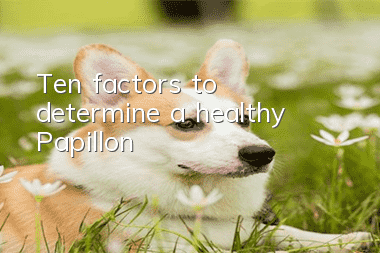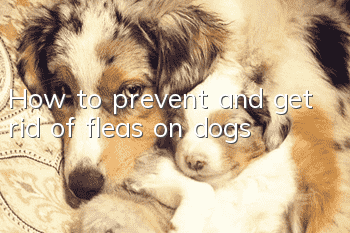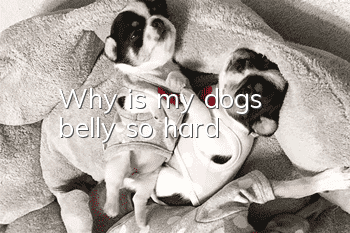Ten factors to determine a healthy Papillon

Papillon dogs are small breeds and are prone to illness if they are not fully vaccinated. Dog illness is different from human illness. Dogs can only show it with some facial features and mental state. As long as you understand the normal health status of Papillon dogs, it is easy to distinguish the similarities and differences between sick and not sick. Here is a brief introduction to parents of the ten major factors that determine whether Papillon dogs are sick:
First look at the appetite: Check whether the butterfly dog has appetite, how much food it eats, and whether it is picky or refuses to eat. It is healthy and has a strong appetite. It is very excited when it is time to feed. It often circles around the owner. It eats quickly, has a stable food intake, and is not picky. Don’t pick. Sick dogs have loss of appetite, reduced appetite, like to drink cold or clear water, pick food or refuse to eat.
Second, look at the spirit: Check whether the butterfly dog is lively, reacts normally to the outside world, has any abnormal demeanor, etc. Healthy dogs are lively and agile, wagging their tails frequently when seeing their owners to show closeness, and are responsive to external stimuli. If the dog's head seems to be drooping, its expression is cold, it stands still or huddles in a corner, and it is slow to react, it is a sign of illness.
Third, check for vomiting: Check whether the butterfly dog vomits after eating, or whether vomit is found when cleaning the kennel. And pay attention to the color, shape and contents of vomitus. Healthy dogs do not vomit. Only dogs with infectious diseases or gastrointestinal diseases will vomit.
Fourth, look at the feces: mainly observe the shape, color, nature and contents of the dog’s feces. Whether there is constipation and diarrhea, whether the feces has a special smell, etc. A healthy dog's stool is strip-shaped, moist, and the color depends on the food. It can be yellow, yellow-green or brown, etc., and has no special odor. If the dog's feces is loose and soft, has blood in the feces, has a foul odor, or is dry and hard with a small amount, etc., these are the characteristics of a serious illness.
5. Look at the posture: Check whether there are any abnormalities in the posture of the butterfly dog when standing, lying, sitting, etc., and whether there are symptoms such as lameness, staggering gait or limb paralysis during exercise. Healthy dogs make various postures naturally and briskly, and can obey commands. Sick dogs, on the other hand, are less likely to follow commands, their various postures are unnatural, and they show signs of pain when they are forced to carry out commands.
6. Look at the eyes: Check whether the Papillon's eyes are lively, whether there are tears, whether the cornea is turbid, whether there is eye droppings or secretions at the corners of the eyes, etc. Healthy dogs have clear eyes, clean eye areas, no eye mucus, no tears, and pink conjunctiva. If you see dull eyes, unclean eyes, red conjunctiva, etc., it may be related to eye disease or indigestion.
7. Look at the nose: The change of the nose is an important sign to determine whether the dog is sick or not. The nose of a healthy dog is cool and moist, with a little water droplets. When the dog is dry or has serous, mucosal or purulent secretions in the nasal cavity, it is sick.
8. Check the oral cavity: Check whether there are redness, swelling, ulcers and rotten spots in the oral cavity, whether there is a special smell, whether there is any difficulty in swallowing, etc. A healthy and large oral cavity is clean, moist, pink, the tongue is bright red, and there is no bad breath or discharge. If your mouth is red and swollen, drooling, and accompanied by bad breath, you are sick.
9. Look at the skin: Look at the butterfliesWhether the dog's coat is falling off, the elasticity and strength of the skin, whether there are rashes, blisters, scabs and ulcers on the skin, etc. A healthy dog's coat is smooth and shiny, and its skin has good elasticity. If the dog's coat keeps falling off, is rough and dull, has dry skin, lacks elasticity, or has defects such as knots and ulcers, it is a sick dog.
10. Check the anus: Check whether the area around the Papillon's anus is clean and whether there is any inflammation, redness, swelling or ulcers. The area around the anus of healthy dogs is clean and free of foreign matter. If there is feces or redness and swelling, it is mostly related to digestive tract diseases, infectious diseases or local inflammation.
- How to train a Greyhound at night? Greyhound training tips!
- How to train a dog to hold the food bowl?
- Here are the common diseases of dogs and cats
- Which is better, Teddy or Pomeranian? What is the difference between Teddy and Pomeranian?
- Teach you how to properly trim your dog’s toenails
- What should I do if my dog is constipated? Symptoms and treatment of dog constipation
- What to do if your dog’s skin is dry
- How much does an Eskimo dog cost_price_pictures
- What are the symptoms of dog shock?
- What should I do if my male dog is infertile?



